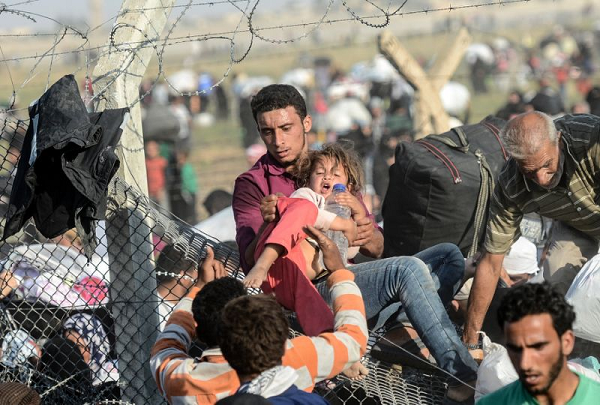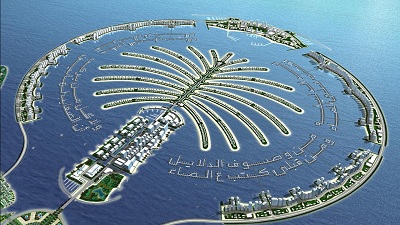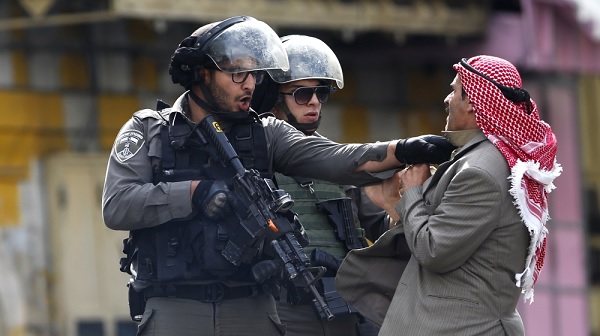
by admin | May 25, 2021 | Interviews, Muslim World

Palestinian Secretary-General of the Presidency, Tayeb Abdul Rahim (R) meets with Wu Sike (L), then China’s special envoy to Middle East, in the West Bank city of Ramallah on April, 27, 2013.
Ramallah : China can be a honest broker in pushing forward the Israeli-Palestinian peace process in light of its fair stance on the issue, a senior Palestinian official told Xinhua in a recent interview.
Tayeb Abdul Rahim, secretary-general of Palestinian Presidency and an aide to President Mahmoud Abbas, said the Palestinians are pleased that China has shown great interest in pushing forward the Israeli-Palestinian peace process stalled since 2014.
Through cooperation with the international community, China, as a great power and a permanent member of the UN Security Council, can help resolve the Israeli-Palestinian conflict based on the two-state solution, Rahim said.
He was commenting on the four-point proposal on resolving the Palestinian issue that was put forward by Chinese President Xi Jinping during a meeting with his Palestinian counterpart Mahmoud Abbas in Beijing in July.
The proposal reiterated China’s firm support for political settlement of the Palestinian issue on the basis of the two-state solution, and for the establishment of an independent, fully sovereign Palestinian state along the 1967 borders with East Jerusalem as its capital.
It also highlighted the importance of enhancing international coordination to achieve peace between Israel and Palestine, while calling for supporting Palestine’s economic development within the framework of China’s Belt and Road Initiative.
China also offered to host a symposium on the Israeli-Palestinian peace later this year and launch a tripartite dialogue mechanism with Palestine and Israel, in order to create necessary conditions for resuming the stalled Israeli-Palestinian peace talks and increase their mutual trust.
Rahim said that if the international community and the influential parties like China, Russia and the European Union are all united in their efforts in pushing forward the Israeli-Palestinian peace process, “they would have greater influence to end the circle of talks for the sake of talks.”
He noted that China has good ties with both sides of the conflict, the Palestinians and the Israelis, and its policy is largely accepted by the Palestinians and the peace forces in Israel.
“China always believes that the Palestinian issue is the root cause of the Middle East conflict and resolving it would lead to the resolution of all problems in the region,” Rahim said, adding that China can play a pivotal role with its vision of resolving the problems through constructive talks.
The senior Palestinian official said the Palestinians welcome China’s initiative to host a peace symposium to be attended by Israeli and Palestinian peace activists within this year.
“This initiative is accepted and welcomed as it represents support for the international efforts to push forward the peace talks that will lead to implementation of the two-state solution,” Rahim said.
A just peace in the Middle East needs to be achieved to confront the rise in terrorism, because terrorists often use the subject of Israeli occupation to justify their crimes, Rahim pointed out.
But in the past 20 years, there have been just talks for the sake of talks between Israel and the Palestinians, without achieving major results. The only benefit was Israel’s expansion of settlement, which damages the two-state solution, he said.
Rahim believed that China’s moves will also motivate other countries to revitalize their efforts to advance the Israeli-Palestinian peace process, Rahim added.
“China can be a honest broker for its political and economic status… because it has no selfish motivation and only wants to establish stability in the region,” he said.
—Xinhua

by admin | May 25, 2021 | Opinions
 Geneva (IINA) – The number of people internally displaced by conflicts around the world rose last year to a record 40.8 million people, a report released on Wednesday showed.
Geneva (IINA) – The number of people internally displaced by conflicts around the world rose last year to a record 40.8 million people, a report released on Wednesday showed.
“This is the highest figure ever recorded and twice the number of refugees worldwide,” said Jan Egeland, head of the Norwegian Refugee Council (NRC), co-authors of the report with the Geneva-based Internal Displacement Monitoring Centre (IDMC). Some 8.6 million internally displaced people (IDPs) linked to conflict were recorded in 2015, including 4.8 million in the Middle East and North Africa. “Displacement… has snowballed since the Arab spring uprising in 2010 and the rise of the Islamic State,” said the report, with Yemen, Syria and Iraq accounting for more than half of the total, AFP reported.
Outside the Middle East, the countries with the highest numbers of people fleeing were Afghanistan, Central African Republic, Colombia, Democratic Republic of Congo, Nigeria, South Sudan and Ukraine. The report also said 19.2 million people were internally displaced last year by disasters. India, China and Nepal accounted for the highest numbers with 3.7 million, 3.6 million and 2.6 million. Conflicts and natural disasters made for a total of 27.8 million new IDPs last year. “This is the equivalent of the combined populations of New York City, London, Paris and Cairo grabbing what they can carry, often in a state of panic, and setting out on a journey filled with uncertainty,” Egeland said.
Out of the top ten countries for IDPs, the report found that five — Colombia, Democratic Republic of Congo, Iraq, South Sudan and Sudan — have featured on the same ranking every year since 2003. The report also for the first time measured the numbers displaced by criminal violence associated with drug trafficking and gang activity — a problem it said remained “unquantified and unaddressed”. It estimated that there were a million IDPs in El Salvador, Guatemala, Honduras and Mexico as of December 2015 as a result of this type of violence.

by admin | May 25, 2021 | Business, Media, Muslim World

Digital video is expected to form 30 per cent of the media industry by 2018. Proliferation of broadband and portable devices setting tone for sector in MENA Region
Digitisation is setting the future of the media industry in the Middle East and North Africa as increased broadband usage leads to soaring use of portable devices, according to the newly-released fifth edition of the Arab Media Outlook.
The report, which was released on Sunday, highlights the current media landscape of 14 Arab countries, and identifies future trends that will shape the industry between 2016 and 2018.
In 2015, according to the report, the digital sector accounted for 15 per cent of the Mena’s media industry, which was valued at over $11.36 billion. In 2020, that number is expected to rise to 27 per cent. In that same time, the total size of the Mena media industry is expected to rise by 3.7 per cent to over $13.63 billion.
Mona Ghanim Al Marri, president of the Dubai Press Club, said that the findings brought into stark focus the need to find solutions that allow for “effective competition” between media outlets, and ways in which to couple digital media platforms and traditional media outlets, as well as using these platforms to maintain the position of media and develop content.
Print media – which in 2015 represented 45 per cent of the region’s media industry – is expected to decline to 31 per cent. In the Mena region, a total of 41 per cent of the average time spent on media in 2015 – 11 hours – is done online, compared to 49 per cent in the UK and 47 per cent in Australia.
Al Marri also noted the noticeable growth of the paid media sector compared to advertising sector, where spending on advertising is set to increase by 2.5 per cent annually between 2016-18, while spending on paid media is set to grow by 3.7 per cent.
Paid media, the report notes, will largely by backed by the growth of video games, which will account for over $1.14 billion in revenue in 2018, 62 per cent of which will be driven by social gaming, compared to 52 per cent in 2015. Paid TV revenue, for its part, is expected to grow 10 per cent in the same timeframe, to over $1.53 billion.
“While paid media is a synonym of ‘excellent content’, we should stop at this noticeable progress and think about what our local and Arab media should do in terms of development steps, to keep pace with the rapid changes,” Al Marri said.
Notably, digital video is expected to form 30 per cent of the media industry by 2018. Already in 2015, video accounted for an average of 71 minutes of daily time spent by 15-to-24-year-olds, compared to 51 minutes on social networks, 29 minutes on search engines and business sites, and only 14 minutes on news websites.
Dr Amina Al Rustamani, group chief executive officer of Tecom Group – of which Dubai Media City is part – noted that a careful study of the findings will be crucial in forming future media and communications strategies.
“The dynamics and trends of the media industry have always provided valuable insight into consumer behaviour and have helped shape the thinking of government and business as to what are the most effective means of communication with their citizens and customers,” she said. “Launching the Arab Media Outlook Report 2016-2018 is especially timely and relevant, against a backdrop of a paradigm shift in the media industry, and unprecedented change and innovation. This report enables us to guide our partners in forming their own strategies for growth.”
A print version of the executive summary of the report will be available during the 15th edition of the Arab Media Forum, to be held on Tuesday and Wednesday at the Dubai World Trade Centre.
(Refrence: http://www.khaleejtimes.com – bernd@khaleejtimes.com)

by admin | May 25, 2021 | Muslim World
 Dubai, (IINA) – The 11th annual World Takaful Conference (WTC) will be convened by leading financial intelligence platform, Middle East Global Advisors, in strategic partnership with the Dubai International Financial Centre (DIFC). Saudi Gazette reported.
Dubai, (IINA) – The 11th annual World Takaful Conference (WTC) will be convened by leading financial intelligence platform, Middle East Global Advisors, in strategic partnership with the Dubai International Financial Centre (DIFC). Saudi Gazette reported.
WTC will take place on April 11-12, in Dusit Thani Hotel, Dubai. WTC 2016 will convene high profile guests and dignitaries from Dubai Islamic Economy Development Centre, Dubai International Financial Centre, Islamic Insurance Association of London, Insurance Authority UAE, PwC, Moody’s, EY, Swiss Re, Munich Re, Noor Takaful, Watania, Emirates RE, among others.
DIFC is the financial hub for the Middle East, Africa and South Asia, providing a world-class platform connecting the region’s markets with the economies of Europe, Asia and the Americas.
It also facilitates the growth in South-South trade and investment. An onshore, international financial center, DIFC provides a stable, mature and secure base for financial institutions to develop their wholesale businesses. The Centre offers all the elements found in the world’s most successful financial industry ecosystems, including an independent regulator, an independent judicial system with a common-law framework, a global financial exchange, inspiring architecture, powerful, enabling support services and a vibrant business community.
Speaking ahead of WTC, Chairman of Middle East Global Advisors, Ehsan Abbas said: “We are delighted to host the World Takaful Conference in strategic partnership with the DIFC Authority. For over a decade, WTC has generated powerful insights to spur industry growth in Dubai and indeed it is very fitting to have the DIFC as our partner, as well as to have the participation of luminaries from the Dubai Islamic Economy Development Centre and UAE Insurance Authority.”
On April 11, WTC will host keynote addresses by Abdulla Mohammed Al Awar, Chief Executive Officer, Dubai Islamic Economy Development Centre; Ebrahim Obaid Al Zaabi, Director General Insurance Authority; Salmaan Jaffrey, Chief Business Development Officer, Dubai International Financial Centre Authority; and Dave Matcham, Member of Executive Committee, Islamic Insurance Association of London.
Speaking on DIFC’s partnership with the WTC, Jaffery said: “With the Islamic finance industry registering a sustained momentum, the demand for takaful products has witnessed a proportionate year-on-year surge, gaining increasing popularity among people seeking Shariah-compliant insurance options.”
He added: “At the same time, it is crucial for policy makers and key stakeholders to address the challenges facing the industry in order to achieve the long-term sustainable growth of the Islamic economy. The WTC is the ideal thought leadership platform for engaging with decision-makers and delivering insights on the long-term development of the takaful industry.”
Jaffrey noted that the “DIFC is privileged to support the 11th WTC as a strategic partner. We will continue to articulate the vision of Vice President and Prime Minister of the UAE and Ruler of Dubai Sheikh Mohammed bin Rashid Al Maktoum, in making Dubai a global hub for Islamic finance. We look forward to engaging in productive discussions with industry leaders on current takaful trends, expected challenges and opportunities, and to facilitating actionable recommendations.”

by admin | May 25, 2021 | Muslim World
 Geneva (IINA) – The United Nations said on Wednesday that footage purporting to show the shooting of a wounded Palestinian by an Israeli soldier in the occupied West Bank last Thursday showed clear “signs of extra-judicial execution”, media agencies reported.
Geneva (IINA) – The United Nations said on Wednesday that footage purporting to show the shooting of a wounded Palestinian by an Israeli soldier in the occupied West Bank last Thursday showed clear “signs of extra-judicial execution”, media agencies reported.
“We are extremely concerned about the apparent extrajudicial execution of a Palestinian man,” spokesman for the UN High Commissioner for Human Rights (UNHCR) Rupert Colville said in a statement regarding the killing of a Palestinian man in Hebron.
“Two Palestinian men allegedly stabbed and wounded an Israeli soldier at a checkpoint in the Israeli-controlled area of Hebron on Thursday morning, and were both shot during the attack. A video later emerged appearing to show one of the alleged Palestinian assailants, subsequently identified as Abd al-Fatah al-Sharif, lying injured but still alive on the ground. Medical staff were shown attending to the wounded soldier, who was driven away in an ambulance, but did not appear to offer any medical assistance to al-Sharif,” Colville said.
“The video then shows an Israeli soldier shooting al-Sharif in the head, killing him. What is particularly chilling is the way none of the 20 or so people at the scene, including medical personnel, appear to pay any attention to the wounded man while he was still alive, and also barely show any reaction in the immediate aftermath of his killing,” he added.
Noting that Israeli authorities had detained the soldier involved in the shooting and a military court has been questioning him, Colville said “A prompt, thorough, transparent and independent investigation is essential”.
“We are concerned this killing may not be a lone incident; a disturbing number of Palestinians, reportedly more than 130 in all, have been killed in recent months,” he said.
“This is not the first incident to be captured on video that raises concerns of excessive use of force. A major concern is that such cases appear not to have been systematically subjected to criminal investigations. This is particularly important in cases that may have involved disproportionate use of force, or possible extra-judicial executions,” Colville said.
UN Special Rapporteur on extrajudicial, summary or arbitrary executions Christof Heyns said on Wednesday that the killing of a Palestinian man by an Israeli soldier on 24 March in Hebron, West Bank, carried “all the signs of a clear case of an extrajudicial execution”.
“The images shown carry all the signs of a clear case of an extrajudicial execution,” said Heyns. “There does not appear to be any provocation on the side of the gravely wounded man”.
“Whatever legal regime one applies to the case, shooting someone who is no longer a threat is murder. It is furthermore troublesome that this was done to no apparent alarm to the other soldiers who were nearby,” Heyns said.
The UN rapporteur also criticized the decision of the medical personnel on the scene to ignore al-Sharif and treat only the seemingly lightly injured Israeli soldier. “Part of protecting the right to life is accountability where it has been violated,” Heyns added.
More than 205 Palestinians have been killed by Israeli troops since a months-long wave of Israeli-Palestinian violence began last October, according to the Palestinian Health Ministry.
On its part, Israel said that 33 Israelis have been killed over the same period in alleged attacks by Palestinians.






